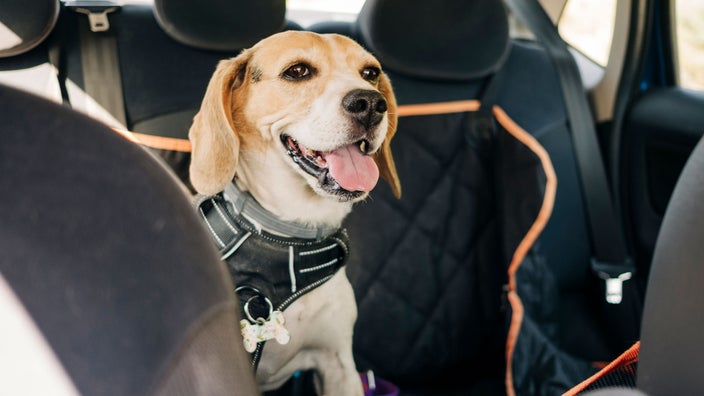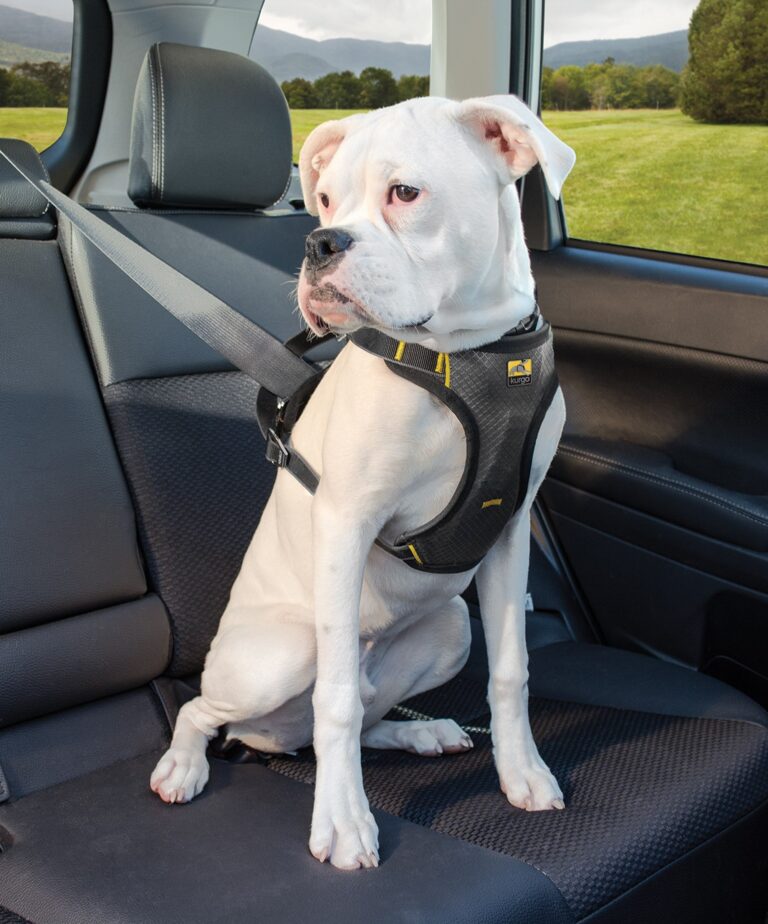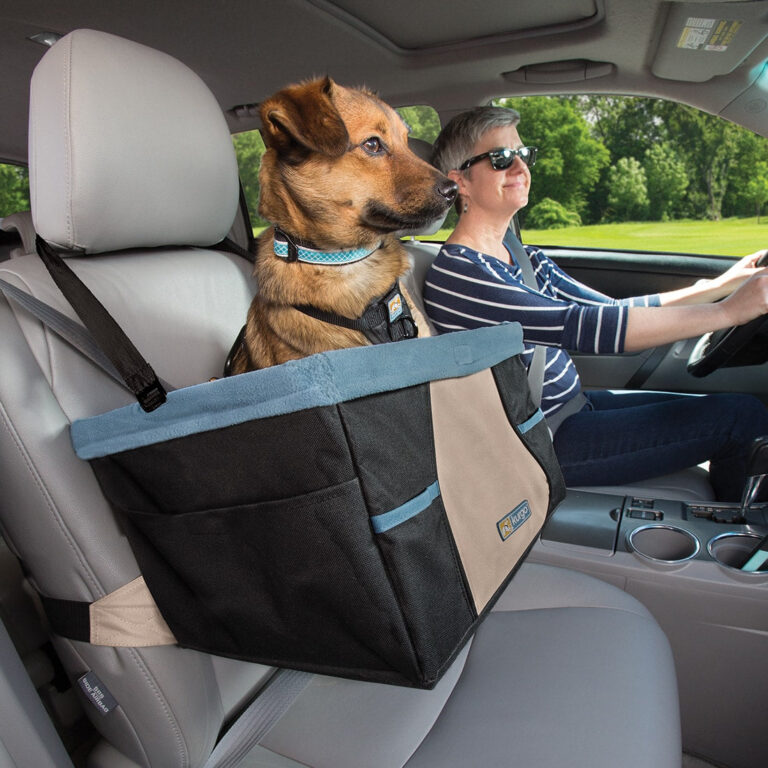What is the Best Way for Dogs to Travel in a Car?: Safe & Comfy Tips
The best way for dogs to travel in a car is in a secure, well-ventilated crate or using a specially designed dog seat belt harness. This ensures their safety and prevents distractions for the driver.
When traveling with your furry companion, their comfort and safety should be a top priority. By using a crate or seat belt harness, you can minimize the risk of injury in case of sudden stops or accidents. It also helps to keep your dog calm and secure during the journey, making it a stress-free experience for both you and your pet.
Remember to make frequent stops for bathroom breaks and hydration to keep your dog comfortable throughout the trip.
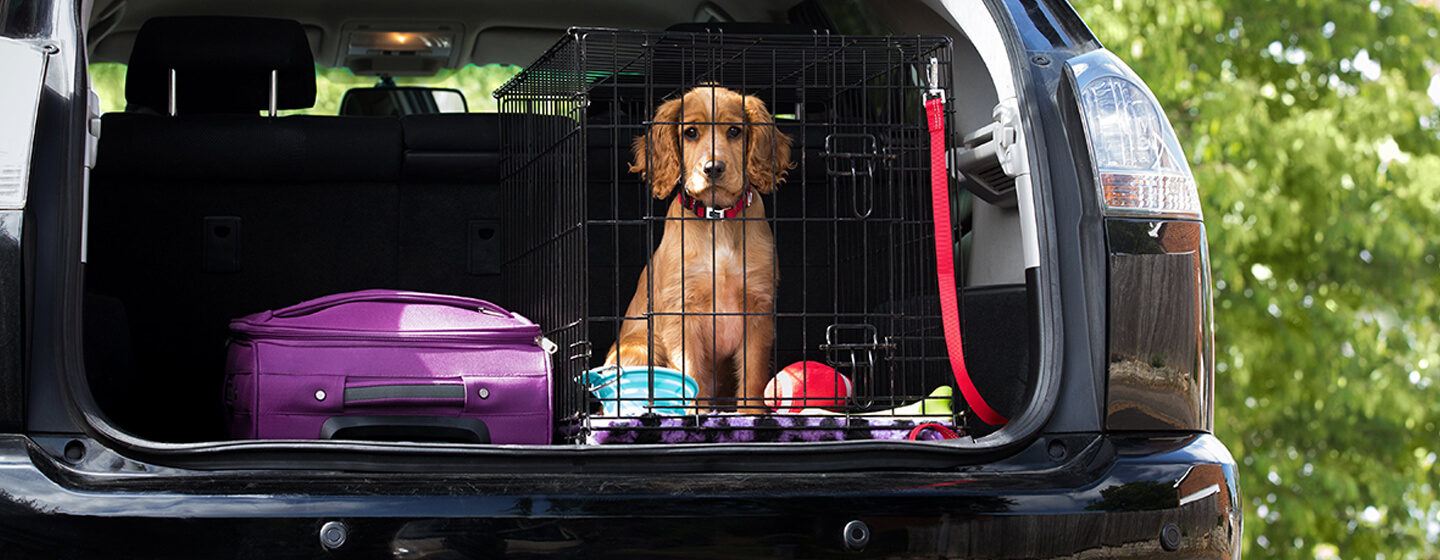
Credit: www.purina.co.nz
Introduction To Canine Car Travel
Discover the best way for dogs to travel in a car for a safe and comfortable journey. Canine car travel can be made stress-free by using a secure crate, harness, or seat belt, ensuring your furry friend’s safety and well-being on the road.
Traveling with your furry friend can be a lot of fun, but it’s important to ensure their safety and comfort while on the road. Whether you’re taking your dog on a long road trip or just a quick trip to the vet, it’s essential to know the best way for dogs to travel in a car. In this article, we will discuss the importance of safety and comfort considerations when it comes to canine car travel.The Importance Of Safety
When traveling with your dog, safety should always be your top priority. Just like humans, dogs can be injured in a car accident. To keep your furry friend safe, consider the following safety measures:- Use a pet restraint system: A pet restraint system such as a harness or carrier can keep your dog safe and secure in case of an accident.
- Keep your dog in the back seat: In the event of an accident, airbags can be dangerous for your dog. Always keep them in the back seat away from airbags.
- Don’t let your dog stick their head out the window: While it may seem fun for your dog, it can be dangerous. Debris from the road can hit your dog, causing injury.
Comfort Considerations
Just like humans, dogs need to be comfortable while traveling in a car. Consider the following comfort considerations:- Make sure your dog has enough room: Your dog should have enough space to move around comfortably in the car.
- Bring a favorite toy or blanket: Bringing along a familiar toy or blanket can help keep your dog calm and comfortable during the ride.
- Take frequent breaks: Make sure to stop every few hours to allow your dog to stretch their legs and go to the bathroom.
Assessing Your Dog’s Travel Needs
Breed And Size Factors
Consider your dog’s breed and size when planning their car travel. Larger breeds may require more space, while smaller dogs might benefit from a secure, enclosed space such as a crate. Understanding your dog’s specific needs based on their breed and size is essential for a safe and comfortable travel experience.
Temperament And Travel Anxiety
Dogs with anxious temperaments may require extra care and attention during car travel. Assess your dog’s temperament and any signs of travel anxiety to determine the best approach. Some dogs may benefit from calming techniques, while others may feel more secure in a familiar crate or harness.
Choosing The Right Restraint System
When it comes to traveling with your furry friend in the car, safety should always be a top priority. Choosing the Right Restraint System for your dog is crucial to ensure their well-being during car rides. Whether it’s a harness or a crate, finding the best option for your dog’s comfort and safety is essential.
Harnesses Vs. Crates
When considering the right restraint system for your dog, it’s important to weigh the pros and cons of harnesses and crates. Harnesses provide dogs with more freedom of movement, allowing them to sit, stand, and lie down comfortably. On the other hand, crates offer a secure and enclosed space for dogs, minimizing their ability to move around the car.
Crash-tested Options
Investing in a crash-tested restraint system is crucial to ensure your dog’s safety in the event of an accident. Look for products that have undergone rigorous testing to withstand impact and provide maximum protection for your furry companion.
Preparing Your Dog For Car Journeys
When it comes to traveling with your furry friend, preparation is key. Dogs may feel anxious or uncomfortable during car journeys, but with the right training and acclimatization strategies, you can ensure a smooth and enjoyable trip for both you and your canine companion. In this section, we will provide you with some valuable tips to help prepare your dog for car journeys.
Training Tips
Proper training plays a crucial role in ensuring your dog’s safety and comfort during car rides. Here are some training tips to consider:
- Introduce your dog to car travel gradually, starting with short trips around the block and gradually increasing the duration.
- Use positive reinforcement techniques such as treats and praise to reward your dog for calm behavior in the car.
- Teach your dog basic obedience commands like “sit” and “stay” to help them stay calm and still during the journey.
- Consider using a secure crate or harness to restrain your dog and prevent any potential accidents or distractions.
- Practice getting in and out of the car with your dog to help them become familiar with the process.
Acclimatization Strategies
Helping your dog become comfortable with car travel requires patience and gradual exposure. Here are some acclimatization strategies to consider:
- Start by allowing your dog to explore the stationary car, letting them sniff around and become familiar with the vehicle’s interior.
- Once your dog is comfortable being inside the car, start the engine briefly while providing treats and positive reinforcement.
- Gradually increase the duration of the engine running while continuing to reward your dog for calm behavior.
- Take short practice drives, gradually extending the distance and duration as your dog becomes more at ease.
- Make the car a positive and enjoyable environment by bringing your dog’s favorite toys, blankets, or treats.
By implementing these training tips and acclimatization strategies, you can prepare your dog for car journeys and ensure a stress-free and enjoyable travel experience for both of you.
Essentials For A Dog-friendly Car Setup
Seat Covers And Protectors
Invest in durable seat covers to shield your car’s interior from dog hair and dirt.
Accessible Water And Snacks
Ensure your dog has easy access to water and snacks during the car journey.
Managing Long-distance Car Travel
For long-distance car travel with dogs, the best way for them to travel is by using a secure and comfortable pet carrier or harness. This ensures their safety and minimizes distractions for the driver. Additionally, frequent breaks are important to allow dogs to stretch their legs and relieve themselves.
Managing Long-Distance Car Travel Long-distance car travel with your furry friend can be both fun and challenging. It is important to make sure that your dog is safe, comfortable and happy throughout the journey. Managing long-distance car travel involves planning ahead and taking necessary precautions to ensure a smooth and stress-free ride for both you and your dog. Here are some tips to help you manage long-distance car travel with your dog. Frequent Breaks and Exercises Taking frequent breaks is essential when traveling long distances with your dog. This will not only give your dog a chance to stretch their legs, but also to relieve themselves. It is recommended to take a break every 2-3 hours or whenever your dog shows signs of restlessness. During the break, you can take your dog for a short walk or play a game of fetch to help them burn off some energy. This will also help prevent your dog from getting bored and anxious during the journey. Monitoring Food and Water Intake It is important to monitor your dog’s food and water intake during a long car journey. Feeding your dog a large meal before the journey can lead to an upset stomach and motion sickness. It is recommended to feed your dog a light meal at least 3-4 hours before the journey and to avoid feeding them during the journey. Instead, offer your dog small amounts of water at regular intervals to keep them hydrated. You can also freeze some water in a bowl or container to provide your dog with a cool and refreshing drink during the journey. Ensuring Comfort and Safety Ensuring your dog’s comfort and safety is crucial during a long car journey. Make sure that your dog is secured in a comfortable and well-ventilated crate or harness. This will prevent your dog from moving around the car and causing distractions while you are driving. You can also provide your dog with a cozy blanket or bed to make them feel more comfortable. It is also important to keep the car temperature cool and to avoid leaving your dog alone in the car for long periods of time. Conclusion Managing long-distance car travel with your dog requires careful planning and preparation. By taking frequent breaks, monitoring your dog’s food and water intake, and ensuring their comfort and safety, you can make the journey a pleasant and enjoyable experience for both you and your furry friend. Remember to always prioritize your dog’s well-being and to make the journey as stress-free as possible.Overcoming Motion Sickness In Dogs
When it comes to traveling in a car, some dogs may experience motion sickness, leading to discomfort and anxiety. Recognizing the signs and taking preventive measures can help ensure a smoother and more pleasant car journey for your furry companion.
Recognizing The Signs
Dogs suffering from motion sickness may display a range of symptoms, including excessive drooling, vomiting, whining, panting, and restlessness. Some dogs may also exhibit pale gums and excessive licking.
Preventative Measures
There are several measures that can be taken to help prevent motion sickness in dogs. One approach is to limit food and water intake before a car journey to reduce the likelihood of an upset stomach. Additionally, ensuring proper ventilation in the car and providing a comfortable, familiar space for the dog can help alleviate anxiety.
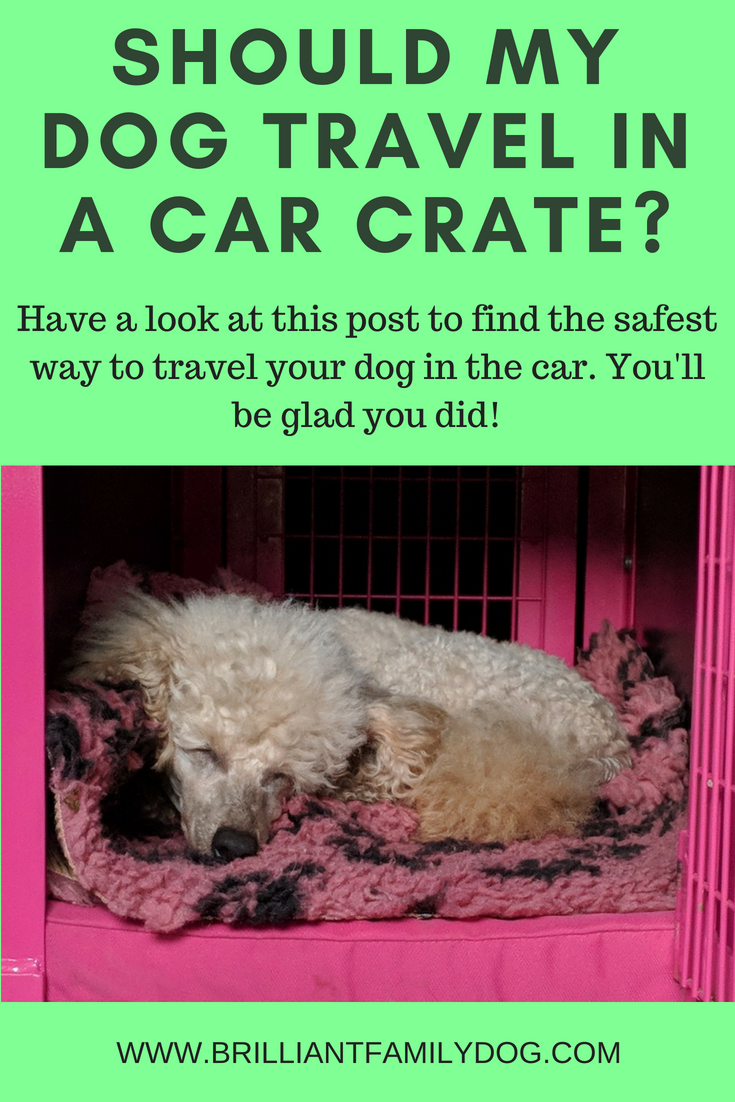
Credit: www.brilliantfamilydog.com
Regulations And Laws To Consider
State-specific Requirements
When traveling with your dog in a car, it’s crucial to be aware of the state-specific regulations and laws. Each state may have its own set of requirements regarding the transportation of pets in vehicles. For example, some states mandate that dogs must be restrained while in a moving vehicle, either through the use of a seat belt harness, a travel crate, or a barrier that prevents them from roaming freely. Before embarking on a road trip with your furry friend, it’s essential to research and familiarize yourself with the regulations of the states you’ll be traveling through. This ensures that you comply with the laws and keep your pet safe at all times.
International Travel Considerations
For those planning to travel internationally with their dog, there are additional considerations to keep in mind. Different countries have their own regulations and requirements for pets entering or traveling through their borders. These may include specific vaccinations, health certificates, and quarantine periods. Before embarking on an international journey with your dog, it’s imperative to thoroughly research the regulations of the destination country and ensure that you have fulfilled all the necessary requirements. This proactive approach can help prevent any issues or delays upon arrival and ensure a smooth travel experience for both you and your canine companion.
Advanced Gear And Gadgets For Dog Travel
Equip your furry friend with the latest advanced gear and gadgets for dog travel. A car seat cover and a seat belt restraint are some of the best ways to ensure your dog’s safety while traveling in a car.
Traveling with a dog can be quite challenging, especially when it comes to car travel. While it is essential to ensure your furry friend is comfortable and safe, it is also necessary to keep them entertained and distracted during long journeys. Fortunately, with the advent of advanced gear and gadgets for dog travel, you can make your car trips more enjoyable and stress-free for both you and your dog. In this article, we will focus on climate control accessories and tech for tracking and safety.Climate Control Accessories
Dogs are sensitive to temperature changes, and the inside of a car can heat up or cool down quickly. As a result, it is crucial to equip your vehicle with climate control accessories to keep your dog comfortable and prevent heatstroke or hypothermia. Here are some popular climate control accessories for dog travel:| Accessory | Description |
|---|---|
| Car Window Shades | Helps keep the interior of the car cooler by blocking sunlight and UV rays |
| Seat Covers | Protects car seats from dog hair, scratches, and dirt. Some models are waterproof and easy to clean |
| Cooling Mats | Helps regulate your dog’s body temperature by absorbing and dissipating heat |
| Heated Blankets | Keeps your dog warm and cozy during cold weather |
Tech For Tracking And Safety
Keeping your dog safe during car travel is a top priority. Tech gadgets for dog travel can help monitor your dog’s behavior, track their location, and keep them secure during car trips. Here are some popular tech gadgets for dog travel:- GPS Trackers – Helps locate your dog in case they get lost during a journey
- Dog Harnesses – Keeps your dog secure during sudden stops or accidents
- Car Barriers – Prevents your dog from jumping into the front seat or getting thrown around during sudden stops
- Backseat Hammocks – Protects your car’s upholstery while providing a comfortable space for your dog to relax
- Smart Cameras – Allows you to monitor your dog’s behavior and provide treats or toys to keep them entertained

Credit: news.orvis.com
Emergency Preparedness On The Road
When traveling with your dog, being prepared for emergencies is crucial. Here are some essential tips for emergency preparedness on the road:
First Aid Kits
- Include bandages, antiseptic wipes, and tweezers.
- Pack dog-specific items like styptic powder for nail injuries.
- Regularly check and replenish the kit to ensure readiness.
Emergency Vet Information
- Keep a list of veterinary clinics along your route.
- Include phone numbers and addresses for quick access.
- Research 24-hour emergency vet services in advance.
Conclusion: Ensuring A Pleasant Journey
Dogs can have a pleasant car journey by using a secure and comfortable dog seat belt or harness, providing them with enough space to move around, and ensuring proper ventilation and hydration. It is important to make their travel experience stress-free and enjoyable.
Recap Of Key Points
During a car journey with your furry friend, it’s crucial to prioritize their safety and comfort. By following a few key guidelines, you can ensure a pleasant journey for both you and your dog.
Proper Restraint
Securing your dog in the car is of utmost importance. Use a suitable restraint system such as a harness, crate, or seat belt to prevent your dog from wandering or becoming a distraction while driving. This will keep them safe in case of sudden stops or accidents.
Comfortable Space
Make sure your dog has enough space to relax during the journey. Whether it’s in a crate, on a car seat, or using a hammock-style cover, providing a comfortable space will help them feel more at ease. Additionally, consider using blankets or familiar items that carry their scent to create a sense of familiarity.
Regular Breaks
Just like humans, dogs need regular breaks to stretch their legs, relieve themselves, and have some water. Plan for frequent pit stops where your dog can have a short walk and take care of their needs. This will prevent them from getting restless or uncomfortable during long drives.
Temperature Control
Ensure a comfortable temperature inside the car to keep your dog from overheating or getting too cold. Avoid leaving them alone in a parked car, especially in extreme weather conditions. Use sunshades, open windows slightly, or adjust the air conditioning to maintain a pleasant environment for your furry companion.
Positive Reinforcement
Encourage good behavior during car journeys by rewarding your dog with treats and praise. This will help them associate car rides with positive experiences and reduce anxiety or fear. Gradually introduce your dog to car travel, starting with short trips and gradually increasing the duration to build their confidence.
To ensure a pleasant journey for your dog in a car, remember to prioritize their safety, comfort, and well-being. Use appropriate restraints, provide a comfortable space, take regular breaks, control the temperature, and reinforce positive behavior. By following these guidelines, you can make car travel an enjoyable experience for both you and your furry friend.
Frequently Asked Questions
What Is The Safest Way For A Dog To Travel In A Car?
Secure your dog with a harness, crate, or seat belt to ensure safety during car rides.
How Do You Travel Long Distance With Dogs In The Car?
To travel long distance with dogs in the car, ensure they are secure, comfortable, and safe. Use a pet seat belt, crate, or barrier. Take breaks for walks, water, and potty breaks. Never leave your dog alone in a hot car.
How Long Can A Dog Travel In A Car?
Dogs can travel in a car for up to 6-8 hours, with breaks every 2 hours for exercise and potty breaks.
What Is The Safest Seat For A Dog In A Car?
The safest seat for a dog in a car is the back seat. Use a harness, crate, or seat belt to secure your pet properly.
Conclusion
Choosing the right safety restraint for your dog is crucial for car travel. Options like harnesses, crates, and seat belts provide protection and comfort. Prioritize your dog’s safety and well-being when traveling by car to ensure a stress-free and enjoyable experience for both of you.
- Can I Get in a Taxi Without a Car Seat? - January 26, 2025
- Can I Get Chlamydia From a Toilet Seat? - January 26, 2025
- Can I Get an Uber With a Car Seat? - January 26, 2025


